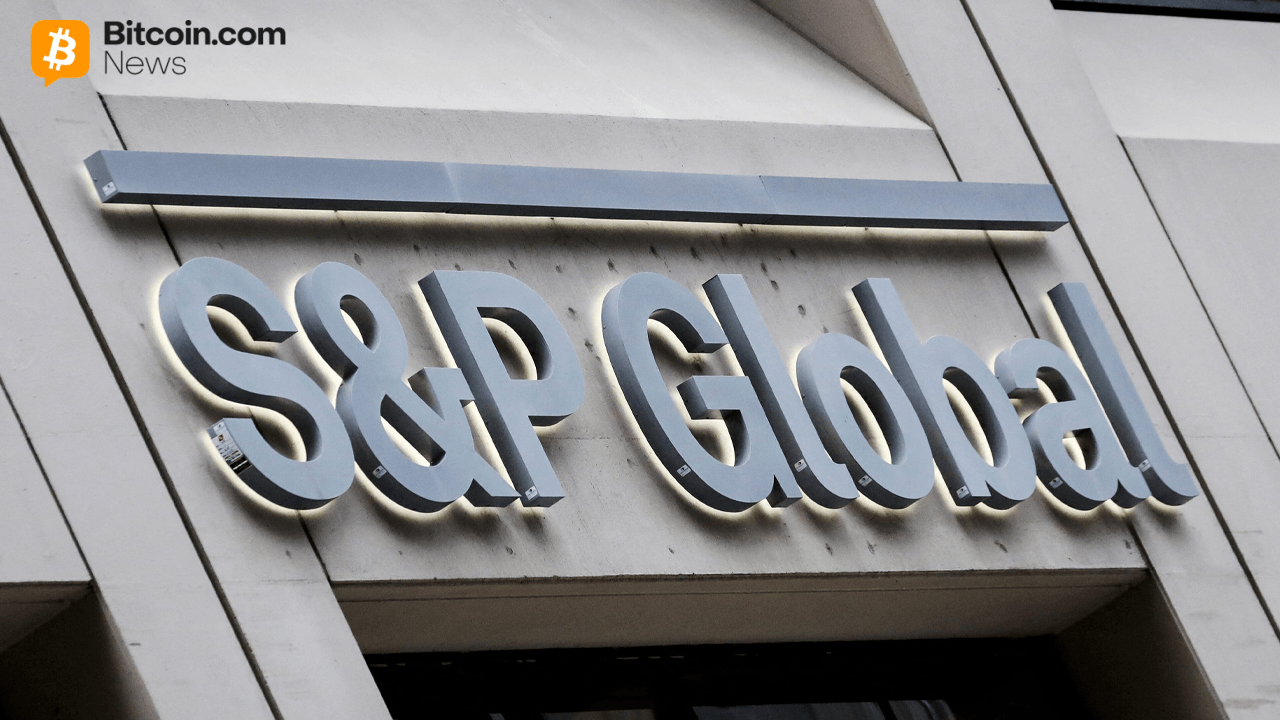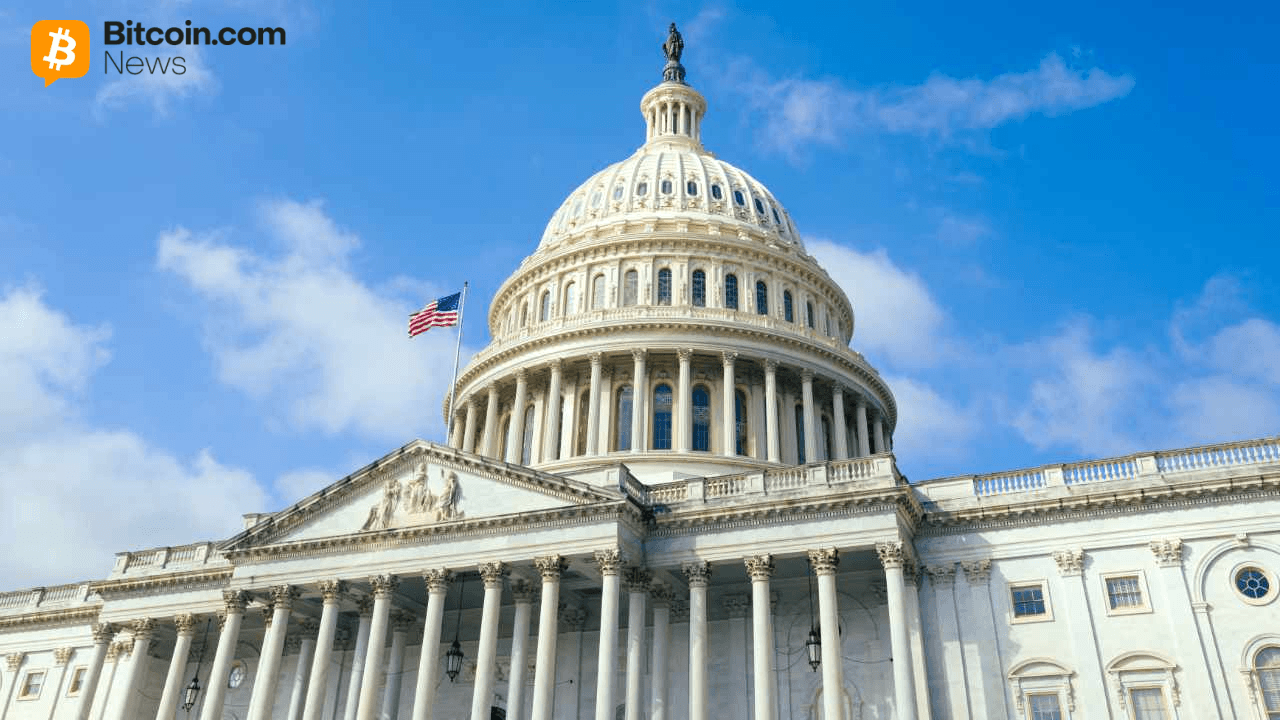China is rethinking its hardline approach to crypto by carving out room for fiat-referenced stablecoins (FRS) as a tool for renminbi (RMB) internationalisation. While the mainland maintains tight capital controls and continues its 2021 ban on crypto trading and mining, Hong Kong is now the controlled test bed, as the jurisdiction rolled out a licensing regime for stablecoin issuers on August 1, 2025. The upcoming iFX EXPO Asia EXPO will have dedicated panel to discuss on China’s stablecoin plans.
Whether this two-track strategy can chip away at the dollar’s dominance in digital cross-border settlement is the question to watch.
Join stablecoin builders this month at the iFX EXPO Asia in Hong Kong.
Mainland Holds the Line, but Signals a Shift
Beijing’s baseline policy has not changed: since 2021, the mainland has banned cryptocurrency trading, issuance, and mining, citing risks to financial stability and the potential for capital flight. What’s new is that senior policymakers are openly discussing whether yuan-backed stablecoins could be used in global payments.
According to Reuters, the State Council is reviewing a draft roadmap that would, for the first time, consider allowing RMB-linked stablecoins, alongside targets for overseas RMB use and a risk-control framework. If approved, this would mark a notable shift from blanket hostility toward privately issued digital assets.
At the same time, regulators continue to stress the dangers: money-laundering and terrorist-financing risks, anonymity-enabled capital outflows, and the broader threat of destabilising China’s capital account.
In case you are wondering about cross-border RMB settlement amount (blue), this has clearly been rapidly increasing in the past few yrs.
Trading (orange) settlement has also been increasingly settled in RMB due to the fear that Chinese financial system could face SWIFT sanction pic.twitter.com/X2imA2G8cp
— tphuang (@tphuang) October 12, 2025
Hong Kong’s Licensing Push: the Controlled Gateway
Hong Kong has become the launchpad for RMB-linked stablecoins. Its Stablecoins Ordinance (Cap. 656) took effect on 1 August 2025, establishing a comprehensive licensing regime for fiat-referenced stablecoin issuers. Issuing or marketing specified stablecoins to the public without authorisation is now a criminal offence.
To implement the law, the Hong Kong Monetary Authority (HKMA) publisheda Supervisory Guideline in July2025, which covers licensing and prudential standards, along with a dedicated AML/CFT Guideline and explanatory materials on licensing and transitional provisions.
Under these rules, licensed issuers must, among other things: maintain full 1:1 reserve backing in high-quality, liquid assets; guarantee redemption at par value within one business day; segregate client assets under a statutory trust with qualified custodians; submit daily statements and weekly reserve reports with independent attestations and annual audit; meet minimum paid-up capital of at least HK$25 million; and implement robust governance and risk controls.
BREAKING:🚨🚨
Hong Kong Passes Law to Regulate Stablecoins, Introduces Licensing for Issuers.
Country FOMO Begins 🫡🫡 #XRP pic.twitter.com/F5wt7hyoiL
— Xaif Crypto🇮🇳|🇺🇸 (@Xaif_Crypto) May 22, 2025
Gatekeeping Access
Cap. 656 makes it clear that not everyone can bring stablecoins to market. From 1 August 2025, offering specified stablecoins is prohibited unless you are a “permitted offeror” – for example, a licensed issuer or authorised bank, as defined under the Ordinance. Unlicensed distributors must cease their activities or pursue an eligible licensing route. This effectively ring-fences early adoption and keeps issuance and marketing within tightly supervised channels.
Identity, Without Exception (Practically Speaking)
A headline feature is the HKMA’s stringent approach to customer identification. The AML/CFT Guideline requires issuers to conduct customer due diligence (CDD) on each holder of their specified stablecoins and to verify ownership or control of every customer wallet. Issuers may rely on regulated third parties (e.g., banks or licensed VASPs) for CDD.
Jakob Kronbichler, CEO & Co-founder, Clearpool (Photo: LinkedIn)
Peer-to-peer transfers between unhosted wallets of non-customers fall outside ongoing monitoring, yet issuers must still monitor overall token circulation and associated risks. The industry has flagged adoption frictions here, especially for users who value flexibility, privacy, and speed.
“Mandatory verification may feel like a brake on retail use, but for institutions—the participants moving the largest flows—it’s an accelerator. Clear rules give counterparties confidence when you’re financing payments or extending credit on-chain,” said Jakob Kronbichler, CEO & Co-founder, Clearpool. “The tweak is to make KYC portable so a verified credential travels across platforms—keeping the system safe while removing repeated checks that tie up liquidity.”
Konstantinos Chrysikos, Head of CRM at Kudotrade, told FinanceMagnates.com: “This could foster long-term trust by appealing to institutions and regulators, but it goes further than many jurisdictions. In the near term, such strict checks may limit adoption, potentially driving users toward markets with lighter rules.”
Readers can hear more from Jakob Kronbichler, as well as other experts (Edwin Cheung, Global Head of OTC at Gate; Kailash Madan, CCO Triple A; and Esme Pau, Head of Capital Markets at CertiK), who will speak on RMB-linked stablecoins, tokenised credit, and cross-border settlement at the iFX EXPO Asia in Hong Kong this month.
Early Market Stance
The HKMA has signalled a measured rollout. As the authority informed Reuters on July 29, 2025, only a “handful” of licences will be approved initially, with the first batch expected in early 2026. Near-term applications are likely to focus on B2B use cases such as trade settlement, rather than mass-retail offerings.
New Headwinds: Pause on RWA Tokenisation by Chinese Brokers
Fresh reporting highlights Beijing’s caution regarding Hong Kong’s development of digital assets. On 23 September 2025, Reuters reported that China’s securities watchdog (CSRC) informally asked some mainland brokerages to pause their real-world asset (RWA) tokenisation businesses in Hong Kong, following earlier guidance to rein in research endorsing stablecoins.
The HKMA, for its part, states that it is reviewing the legal framework for tokenisation (initially focusing on the bond market) and noted that 77 firms had expressed interest in stablecoin licences as of August 31. The upshot: enthusiasm is high, but policy risk remains non-trivial, and mainland instructions can quickly tighten the spigot.
Outside Hong Kong: the First Regulated Offshore CNH Stablecoin Launches
On 17 September 2025, fintech AnchorX launched AxCNH, a CNH-pegged stablecoin in Kazakhstan, utilising Conflux and cleared by local regulators; a notable, regulated proof point for RMB-linked tokens outside Hong Kong’s regime. The HKMA has separately reiterated that no stablecoin issuers are currently licensed in Hong Kong, and that unlicensed issuance/marketing would breach Cap. 656.
Interested Parties Are Waiting in Anticipation
Major Chinese tech groups have explored issuing offshore RMB stablecoins via Hong Kong entities – including Ant Group – with motivations spanning streamlined trade finance, faster settlement, and new revenue from fees and reserve yields (akin to US issuer Circle). Some reports have also linked JD.com to exploratory work.
Konstantinos Chrysikos, Head of Customer Relationship Management at Kudotrade
Brokers are paying attention, too. According to Chrysikos, mainland clients have created a “wave of requests” since the law passed, spurring multiple licence applications in the first weeks of August. While firms are eager to capture new flow and product opportunities, recent mainland guidance – first to avoid over-promoting stablecoins and now to pause some RWA tokenisation – highlights how sensitive the policy environment remains.
What This Could Change (And What It Won’t—Yet)
Stablecoins can facilitate faster, cheaper cross-border payments. Today’s correspondent-banking chains are slow and fee-heavy; tokenised cash enables more direct settlement, cutting time and costs. Near-term adoption is most likely in tightly monitored B2B corridors linked to Hong Kong and the Greater Bay Area.
“The clearest 2026 impact is cross-border trade and supplier payments—think Africa → Hong Kong → China,” added Kronbichler. “A CNH stablecoin collapses multi-step conversion into near-instant settlement. For fintechs already moving remittances and merchant payments in stablecoins, the missing piece has been matching liquidity. That’s where Payment Financing (PayFi) is transformative: it makes private credit behave like a crypto-native asset—short cycles, liquid, scalable. The prerequisite is interoperability, so CNH stablecoins plug into existing payment and credit rails.”
They could also be the missing link for programmable trade finance: on blockchain rails, smart contracts can automatically release funds when goods are delivered or milestones are met, potentially meaning fewer disputes, less paperwork, and settlement tied directly to performance.
Still, liquidity is decisive. For RMB-linked stablecoins to matter, there must be sufficient offshore issuance, credible one-to-one redemption, and cooperation from partner jurisdictions. Until those conditions mature, the dollar’s deep liquidity and network effects will continue to maintain its lead.
Dollar Dominance and Beijing’s Digital Sovereignty Play
The global stablecoin market remains heavily centred on the US dollar. The BIS describes the supply as overwhelmingly dollar-denominated, and Reuters has reported that the USD share exceeds 99%. Meanwhile, SWIFT data indicated that the RMB accounted for 2.88% of global payments in June 2025, versus the USD’s 47.19%. This entrenched dollar dominance is the backdrop China is trying to shift.
Hong Kong’s RMB Liquidity Gets New Pipes
Complementing the licensing regime, the PBoC and HKMA unveiled measures in late September to deepen the RMB market plumbing in Hong Kong, including repo access for offshore institutions, the expansion of Swap Connect, higher daily limits, and steps toward yuan bond futures. These aren’t stablecoin rules, but they support the liquidity infrastructure that RMB-linked tokens could ultimately tap.
China’s approach is dual-track: maintain control on the mainland while allowing Hong Kong to incubate a tightly supervised, identity-verified stablecoin market that could gradually seed RMB liquidity in digital trade. The latest CSRC signals on RWA tokenisation show how quickly mainland guidance can recalibrate risk appetite, which may remain a crucial variable for brokers, tech platforms, and issuers through 2026.
China is rethinking its hardline approach to crypto by carving out room for fiat-referenced stablecoins (FRS) as a tool for renminbi (RMB) internationalisation. While the mainland maintains tight capital controls and continues its 2021 ban on crypto trading and mining, Hong Kong is now the controlled test bed, as the jurisdiction rolled out a licensing regime for stablecoin issuers on August 1, 2025. The upcoming iFX EXPO Asia EXPO will have dedicated panel to discuss on China’s stablecoin plans.
Whether this two-track strategy can chip away at the dollar’s dominance in digital cross-border settlement is the question to watch.
Join stablecoin builders this month at the iFX EXPO Asia in Hong Kong.
Mainland Holds the Line, but Signals a Shift
Beijing’s baseline policy has not changed: since 2021, the mainland has banned cryptocurrency trading, issuance, and mining, citing risks to financial stability and the potential for capital flight. What’s new is that senior policymakers are openly discussing whether yuan-backed stablecoins could be used in global payments.
According to Reuters, the State Council is reviewing a draft roadmap that would, for the first time, consider allowing RMB-linked stablecoins, alongside targets for overseas RMB use and a risk-control framework. If approved, this would mark a notable shift from blanket hostility toward privately issued digital assets.
At the same time, regulators continue to stress the dangers: money-laundering and terrorist-financing risks, anonymity-enabled capital outflows, and the broader threat of destabilising China’s capital account.
In case you are wondering about cross-border RMB settlement amount (blue), this has clearly been rapidly increasing in the past few yrs.
Trading (orange) settlement has also been increasingly settled in RMB due to the fear that Chinese financial system could face SWIFT sanction pic.twitter.com/X2imA2G8cp
— tphuang (@tphuang) October 12, 2025
Hong Kong’s Licensing Push: the Controlled Gateway
Hong Kong has become the launchpad for RMB-linked stablecoins. Its Stablecoins Ordinance (Cap. 656) took effect on 1 August 2025, establishing a comprehensive licensing regime for fiat-referenced stablecoin issuers. Issuing or marketing specified stablecoins to the public without authorisation is now a criminal offence.
To implement the law, the Hong Kong Monetary Authority (HKMA) publisheda Supervisory Guideline in July2025, which covers licensing and prudential standards, along with a dedicated AML/CFT Guideline and explanatory materials on licensing and transitional provisions.
Under these rules, licensed issuers must, among other things: maintain full 1:1 reserve backing in high-quality, liquid assets; guarantee redemption at par value within one business day; segregate client assets under a statutory trust with qualified custodians; submit daily statements and weekly reserve reports with independent attestations and annual audit; meet minimum paid-up capital of at least HK$25 million; and implement robust governance and risk controls.
BREAKING:🚨🚨
Hong Kong Passes Law to Regulate Stablecoins, Introduces Licensing for Issuers.
Country FOMO Begins 🫡🫡 #XRP pic.twitter.com/F5wt7hyoiL
— Xaif Crypto🇮🇳|🇺🇸 (@Xaif_Crypto) May 22, 2025
Gatekeeping Access
Cap. 656 makes it clear that not everyone can bring stablecoins to market. From 1 August 2025, offering specified stablecoins is prohibited unless you are a “permitted offeror” – for example, a licensed issuer or authorised bank, as defined under the Ordinance. Unlicensed distributors must cease their activities or pursue an eligible licensing route. This effectively ring-fences early adoption and keeps issuance and marketing within tightly supervised channels.
Identity, Without Exception (Practically Speaking)
A headline feature is the HKMA’s stringent approach to customer identification. The AML/CFT Guideline requires issuers to conduct customer due diligence (CDD) on each holder of their specified stablecoins and to verify ownership or control of every customer wallet. Issuers may rely on regulated third parties (e.g., banks or licensed VASPs) for CDD.
Jakob Kronbichler, CEO & Co-founder, Clearpool (Photo: LinkedIn)
Peer-to-peer transfers between unhosted wallets of non-customers fall outside ongoing monitoring, yet issuers must still monitor overall token circulation and associated risks. The industry has flagged adoption frictions here, especially for users who value flexibility, privacy, and speed.
“Mandatory verification may feel like a brake on retail use, but for institutions—the participants moving the largest flows—it’s an accelerator. Clear rules give counterparties confidence when you’re financing payments or extending credit on-chain,” said Jakob Kronbichler, CEO & Co-founder, Clearpool. “The tweak is to make KYC portable so a verified credential travels across platforms—keeping the system safe while removing repeated checks that tie up liquidity.”
Konstantinos Chrysikos, Head of CRM at Kudotrade, told FinanceMagnates.com: “This could foster long-term trust by appealing to institutions and regulators, but it goes further than many jurisdictions. In the near term, such strict checks may limit adoption, potentially driving users toward markets with lighter rules.”
Readers can hear more from Jakob Kronbichler, as well as other experts (Edwin Cheung, Global Head of OTC at Gate; Kailash Madan, CCO Triple A; and Esme Pau, Head of Capital Markets at CertiK), who will speak on RMB-linked stablecoins, tokenised credit, and cross-border settlement at the iFX EXPO Asia in Hong Kong this month.
Early Market Stance
The HKMA has signalled a measured rollout. As the authority informed Reuters on July 29, 2025, only a “handful” of licences will be approved initially, with the first batch expected in early 2026. Near-term applications are likely to focus on B2B use cases such as trade settlement, rather than mass-retail offerings.
New Headwinds: Pause on RWA Tokenisation by Chinese Brokers
Fresh reporting highlights Beijing’s caution regarding Hong Kong’s development of digital assets. On 23 September 2025, Reuters reported that China’s securities watchdog (CSRC) informally asked some mainland brokerages to pause their real-world asset (RWA) tokenisation businesses in Hong Kong, following earlier guidance to rein in research endorsing stablecoins.
The HKMA, for its part, states that it is reviewing the legal framework for tokenisation (initially focusing on the bond market) and noted that 77 firms had expressed interest in stablecoin licences as of August 31. The upshot: enthusiasm is high, but policy risk remains non-trivial, and mainland instructions can quickly tighten the spigot.
Outside Hong Kong: the First Regulated Offshore CNH Stablecoin Launches
On 17 September 2025, fintech AnchorX launched AxCNH, a CNH-pegged stablecoin in Kazakhstan, utilising Conflux and cleared by local regulators; a notable, regulated proof point for RMB-linked tokens outside Hong Kong’s regime. The HKMA has separately reiterated that no stablecoin issuers are currently licensed in Hong Kong, and that unlicensed issuance/marketing would breach Cap. 656.
Interested Parties Are Waiting in Anticipation
Major Chinese tech groups have explored issuing offshore RMB stablecoins via Hong Kong entities – including Ant Group – with motivations spanning streamlined trade finance, faster settlement, and new revenue from fees and reserve yields (akin to US issuer Circle). Some reports have also linked JD.com to exploratory work.
Konstantinos Chrysikos, Head of Customer Relationship Management at Kudotrade
Brokers are paying attention, too. According to Chrysikos, mainland clients have created a “wave of requests” since the law passed, spurring multiple licence applications in the first weeks of August. While firms are eager to capture new flow and product opportunities, recent mainland guidance – first to avoid over-promoting stablecoins and now to pause some RWA tokenisation – highlights how sensitive the policy environment remains.
What This Could Change (And What It Won’t—Yet)
Stablecoins can facilitate faster, cheaper cross-border payments. Today’s correspondent-banking chains are slow and fee-heavy; tokenised cash enables more direct settlement, cutting time and costs. Near-term adoption is most likely in tightly monitored B2B corridors linked to Hong Kong and the Greater Bay Area.
“The clearest 2026 impact is cross-border trade and supplier payments—think Africa → Hong Kong → China,” added Kronbichler. “A CNH stablecoin collapses multi-step conversion into near-instant settlement. For fintechs already moving remittances and merchant payments in stablecoins, the missing piece has been matching liquidity. That’s where Payment Financing (PayFi) is transformative: it makes private credit behave like a crypto-native asset—short cycles, liquid, scalable. The prerequisite is interoperability, so CNH stablecoins plug into existing payment and credit rails.”
They could also be the missing link for programmable trade finance: on blockchain rails, smart contracts can automatically release funds when goods are delivered or milestones are met, potentially meaning fewer disputes, less paperwork, and settlement tied directly to performance.
Still, liquidity is decisive. For RMB-linked stablecoins to matter, there must be sufficient offshore issuance, credible one-to-one redemption, and cooperation from partner jurisdictions. Until those conditions mature, the dollar’s deep liquidity and network effects will continue to maintain its lead.
Dollar Dominance and Beijing’s Digital Sovereignty Play
The global stablecoin market remains heavily centred on the US dollar. The BIS describes the supply as overwhelmingly dollar-denominated, and Reuters has reported that the USD share exceeds 99%. Meanwhile, SWIFT data indicated that the RMB accounted for 2.88% of global payments in June 2025, versus the USD’s 47.19%. This entrenched dollar dominance is the backdrop China is trying to shift.
Hong Kong’s RMB Liquidity Gets New Pipes
Complementing the licensing regime, the PBoC and HKMA unveiled measures in late September to deepen the RMB market plumbing in Hong Kong, including repo access for offshore institutions, the expansion of Swap Connect, higher daily limits, and steps toward yuan bond futures. These aren’t stablecoin rules, but they support the liquidity infrastructure that RMB-linked tokens could ultimately tap.
China’s approach is dual-track: maintain control on the mainland while allowing Hong Kong to incubate a tightly supervised, identity-verified stablecoin market that could gradually seed RMB liquidity in digital trade. The latest CSRC signals on RWA tokenisation show how quickly mainland guidance can recalibrate risk appetite, which may remain a crucial variable for brokers, tech platforms, and issuers through 2026.







